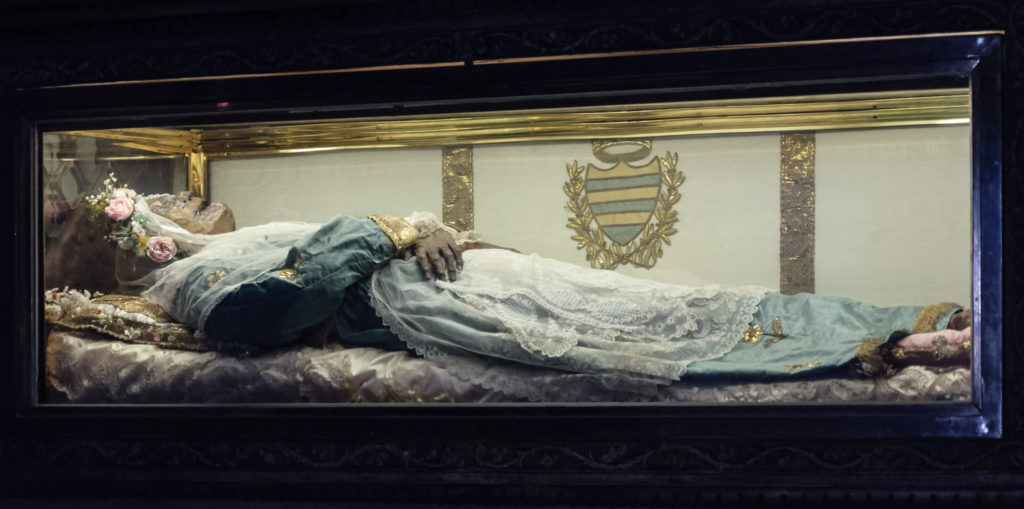“The Miracle of Saint Zita” by Bernardo Strozzi (c.1581-1644) (Courtesy of Wikipedia)
AKA Sitha or Citha
Born: c. 1212
Died: 27 Apr 1272
Order: Third Order of Saint Francis
Canonized: 1696 by Pope Innocent XII
Feast: 27 Apr
Patronage: maids, domestic servants, butlers, waiters, rape victims, lost keys, and people ridiculed for their piety
Zita was born into a poor but pious family in Monte Sagrati (Monsagrati) in Tuscany. Her mother raised her to have a strong prayer life. Her sister became a nun and her uncle Graziano lived as a hermit who was regarded as a saint by the locals.
At the age of twelve became a servant for the Fratinelli family, nobles who sold wool in Lucca. Since they lived near the local church, she was able to attend daily Mass before beginning her duties. She was also a member of the Third Order Franciscans.
Because of her piety, Zita was treated badly by her employers and the other servants. For some time her master used to fly into a rage whenever he saw her. Despite this, she still viewed her work as her way of serving God and her attitude eventually won them over. Through her endurance, humility and virtue became evident to all and she was promoted to the role of managing the household including the other servants. Her employers gave her a free reign over her schedule.
In addition to attending Mass on a daily basis, Zita frequently gave away her own food to feed the poor. One morning she left her duties to bake some bread for the poor. Her fellow servants heard about this and went to the kitchen to investigate only to find angels there helping to bake the bread.
During a famine Zita distributed beans from her employer’s stock without informing him. When he decided to sell the beans Zita became afraid and began to pray. When her employer came for the beans, God had miraculously refilled his supply.

The Incorrupt Body of Saint Zita of Lucca (Courtesy of Wikipedia)
Zita foretold her own death and prepared herself for it. She died at the age of 60 still serving the same family. A star appeared over the attic in which she had been living. After her death many miracles occurred through her intercession. At the time of her canonization (1696), 150 miracles had been attributed to her intercession. The Fratinelli family contributed to the cause for her canonization. Zita is one of the incorruptibles meaning that her body has never decayed even though no preservatives were used. Her relics are kept in the Basilica of St. Frediano where she attended Mass.
She is considered to be the patron saint of maids, domestic servants, butlers, waiters, rape victims, lost keys, and people ridiculed for their piety.
She is usually portrayed in art with a bag and keys or a loaf of bread.
Text © 2018 Gary J. Sibio. All rights reserved.



Thank you. Obviously I can’t take credit for the images. They were all public domain images I found on the Internet.
Another grand historical post. The painting is magnificent. Thank you for introducing this wonderful lady and saint.
Thanks, HistoryGal. I’m glad you enjoyed it. I have a lot more stuff like this but I have to rewrite my notes into a more coherent readable form.
A fascinating account, thank you for posting it.
You’re very welcome, Paul. I’m glad you enjoyed it.
I read about it for the first time, but it was interesting to me. Thank you.
The information was all new to me also. I heard her name mentioned and decided to see what I could find about her.
The big power of God – The miracle
Amen, Roberto. It’s inspiring to see how God helps us.
very interesting post…..
Thank you, Branka. I’m glad you liked it.
Interesting post, thanks for sharing.
Thanks, Pamela. I’m glad you enjoyed it.